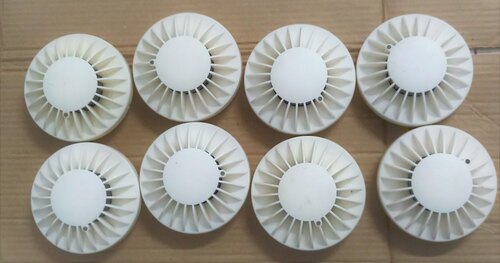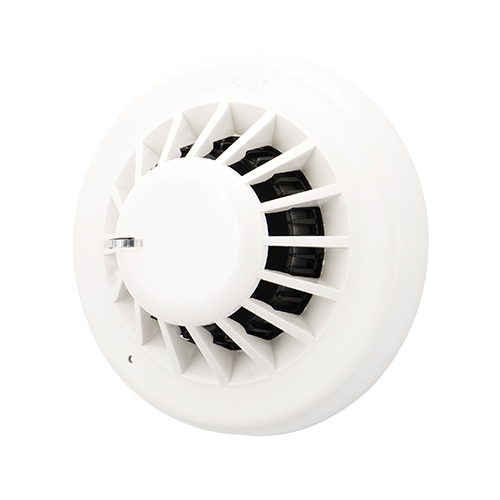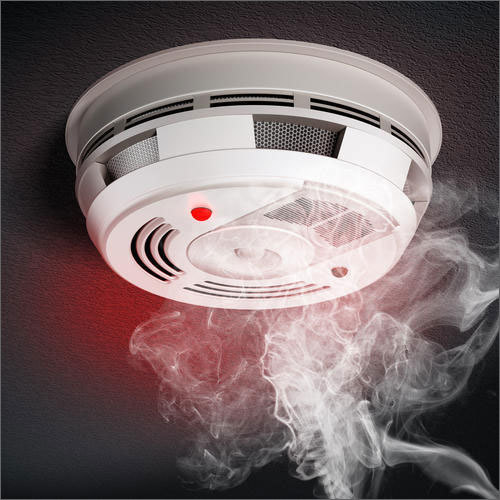- Home Page
- Company Profile
-
Our Products
- Fire Suppression Systems
- FK 5112 Suppression System
- Clean Agent Cylinderless System
- Clean Agent Cylinderless System for Car
- Wind Turbine Fire Detection and Suppression System
- Vehicle Fire Protection System
- Mild Steel Novec 1230 Fire Suppression System
- Fire Extinguishing System For Electrical Cabinets
- Aerosol Fire Suppression System
- Novec 1230 Flooding System
- Hfc 227ea Based Fire Suppression System
- Modular Clean Agent HFC236fa Extinguishers
- Aerosol Based Fire Suppression System
- FM200 Fire Suppression System
- Cylinder Less Tube Based Fire Detection Suppression Systems
- High Voltage Transformer Fire Suppression System
- Hfc227ea Clean Agent Fire Extinguishers
- Novec 1230 Clean Agent Suppression Systems
- Carbon Steel Fm 200 Fire Suppression System
- Direct Tube Based Fire Suppression System
- Novac 1230 Fire Flooding Systems
- Clean Agent Fire Suppression System
- Hfc 227ea Auto Fire Extinguishing System
- Car Fire Protection System
- Fire Suppression For Power Generators
- Hfc227ea Total Flooding System
- Dual Agent Retardant fire Suppression System
- Heat Sensing Tube
- Clean Agent Fire Suppression System for Wind Turbine
- Bus Engine Fire Protection System
- Fire Trace System
- Novec 1230 Fire Suppression System
- SEVO Tubing Suppression System
- Fire Detection And Fire Suppression System
- Heavy Vehicle Fire Suppression Systems
- Fire Sprinkler System Installation Service
- Vehicle Fire Suppression System
- Pre Engineered Fire Suppression System
- Server Rack Fire Suppression System
- Mild Steel Fire Suppression Systems
- Fire Suppression System (Capacitor Panel)
- Electrical Panel Detection Suppression System
- Fire Detection Tube Suppression System
- Fire Extinguishing System For Electrical Panel
- Electrical Panel Gas Suppression System
- Novec 1230 Fire Suppression System for Industrial
- Fm200 Gas Based Fire Suppression Systems
- FM200 Gas Based Fire Suppression Systems For Wind Turbines
- Tube Based Fire Suppression System
- Novec 1230 Fire Gas Suppression System For Electrical Panel
- Novec 1230 Fire Extinguishing System
- Novec 1230 Gas Suppression System For Wind Turbine Fire Suppression System
- Nitrogen Injection Transformer Fire Protection System
- Electrical Panel Fire Suppression System
- Dual Agent Retardant Fire Suppression System
- Diffusible FE36 Fire Suppression System
- Hazardous Cabinets Fire Suppression System
- Chemical Fire Suppression Systems
- Nitrogen NITFP System
- Automatic Fire Detection and Suppression System
- Novec 1230 Fire Suppression Systems
- Fire Suppression For Wind Turbines
- Bladder Tank Proportioning System
- Electrical Panel Fire Suppression
- Fk 5112 Fire Suppression System
- Fire Extinguishing Systems
- Fire Alarms And Detection Systems
- White Addressable Duct Detector
- UV IR Flame Detector
- Agni Sounder Hooter
- Addressable Fire Alarm System
- Fire Alarm System Amc Service
- Conventional Fire Alarm System
- Digital Addressable Fire Alarm System
- Aspirating Systems Smoke Detectors
- Agni Addressable Security Fire Alarm
- Fire Detection And Fire Alarm System
- Uv Ir Flame Detector System
- Ravel 2 zone Conventional Fire Alarm System
- Addressable Photoelectric Duct Detector
- Fire Alarm Sounder
- Fire Response Indicator
- Vesda Aspirating Smoke Detection System
- 4 Zone Addressable Fire Alarm System
- Ravel 4 zone Conventional Fire Alarm System
- Fire Detection Fire Alarm System
- Co2 Flooding/Suppression System
- High Pressure Co2 Automatic Fire Extinguishing System
- Co2 Gas Fire Suppression System
- CO2 Suppression System
- CO2 Fire Flooding
- ELECTRICAL PANEL CO2 FLOODING SYSTEM
- Automatic Pipeline Co2 Fire Suppression System
- Co2 Fire Flooding System
- Co2 Cylinder Fire Suppression System
- In Direct CO2 Flooding System
- Co2 Based Fire Suppression Systems
- Automatic Co2 Flooding System
- Automatic CO2 Flooding System
- Gas Based Co2 Flooding System
- Automatic Pipeline CO2 Fire Suppression System
- Co2 Fire Suppression System
- Passive Fire Protection
- Fire Extinguishers
- Twin Trolley Type Fire Extinguisher
- Co2 Fire Extinguisher Refilling Service
- Clean Agent Type Fire Extinguisher
- Amc For Fire Fighting System
- Co2 type fire Extinguisher
- Mild Steel Wet Chemical Fire Extinguisher
- Carbon Steel Abc Fire Extinguisher
- Automatic Ceiling Mounted D Type Fire Extinguisher
- Water Spray Sprinkler Systems
- Kanex Fire Extinguishers
- Fe36 Clean Agent Fire Extinguisher
- Modular Dry Chemical Powder Extinguishers
- Kitchen Fire Suppression System
- Kitchen Fire Suppression System
- Mild Steel Kitchen Fire Suppression
- Kitchen Hood Fire Suppression System
- Automatic Kitchen Fire Extinguishing System
- Kitchen Fire Extinguisher
- kitchen Nozzle Fire Suppression System
- Restaurant Kitchen Fire Suppression System
- Fire Suppression System For Commercial Kitchen
- Commercial Kitchen Fire Suppression System
- HW & MV Fire Protection System
- Commercial Gas Leak Detector
- Medium Velocity Water Spray System (MVWS)
- Transformer Fire Protection System
- Transformer Fire Prevention System
- Transformer Fire Suppression Systems
- Conveyor belt system fire protection system
- Nitrogen Injection Fire Protection System For Transformer
- High Velocity Water Spray System (HVWS)
- Fire Suppression Accessories
- Fire Hydrant System
- Clean Agent Gas Refilling
- Fire Fighting Foams
- Smoke Detector
- Ravel Beam Smoke Detector
- Addressable Photoelectric Smoke Detector
- Addressable Smoke Detector
- Fire Alarm Addressable Smoke Detector
- Battery Addressable Smoke Detector
- Polycarbonate Smoke Detector
- Agni Smoke Detector
- Conventional Optical Smoke Detectors
- Addressable Duct Smoke Detector
- Agni Wireless Smoke Detector
- White Polycarbonate Smoke Detector
- Manual Call Point
- Fire Retardant Fabric
- Fire Alarm Control Panel
- Heat Detector
- Beam Detectors
- Fire Door
- HW&MV Fire Protection
- Fire Cable Coating
- Fire Cable
- Public Address Systems
- Hydraulic Hose
- Fire Suppression Systems
- Contact Us

Conventional Optical Smoke Detectors
700 INR/Piece
Product Details:
X
Conventional Optical Smoke Detectors Price And Quantity
- 650.00 - 700.00 INR/Piece
- 200 Piece
- 700 INR/Piece
Conventional Optical Smoke Detectors Trade Information
- Cheque
- Asia
- All India
Product Description
A conventional optical smoke detector is a type of smoke alarm commonly used for fire detection and safety in residential and commercial buildings. It operates based on the principle of detecting smoke particles in the air.
Here's how it works and its key features:
1. Optical Sensing: Conventional optical smoke detectors use an optical sensor, typically a light source (usually an infrared LED) and a photodiode or phototransistor. The components are placed inside a detection chamber.
2. Light Scattering: In normal conditions, the emitted light from the LED does not directly reach the photodiode because the chamber is free of smoke particles. However, when smoke enters the chamber due to a fire or smoke source, the smoke particles scatter the light.
3. Light Detection: The scattered light is detected by the photodiode or phototransistor. This change in the level of detected light triggers the smoke detector to activate.
4. Alarm Activation: When a predetermined threshold of scattered light is reached or exceeded, the smoke detector initiates an alarm. This alarm can be in the form of an audible alarm (a loud siren or sounder), a visual indicator (flashing LED lights), or both.
5. Zoning: Conventional optical smoke detectors are often used in zones within a building. Each zone typically has its own detector(s), and when one detector in a zone activates, it can indicate the presence of smoke in that specific area.
6. Limited Information: Conventional optical smoke detectors do not provide specific information about the exact location of the fire or the level of smoke concentration. They simply trigger an alarm when smoke is detected within their coverage area.
7. Wiring: These detectors are typically connected using conventional wiring methods, which means they are part of a larger fire alarm system. When a smoke detector in the system activates, it can transmit a signal to a central control panel, which can then activate other safety measures, such as notifying authorities or initiating an evacuation alarm.
8. Maintenance: Routine maintenance, including cleaning the detection chamber to prevent dust and dirt buildup, is essential to ensure the proper functioning of conventional optical smoke detectors.
FAQ:
1. What is a conventional optical smoke detector?
Ans: A conventional optical smoke detector is a device designed to detect the presence of smoke particles in the air. It operates using an optical sensor that relies on the scattering of light by smoke particles to trigger an alarm.
2. How does a conventional optical smoke detector work?
Ans: It works by emitting a light source (typically an infrared LED) into a detection chamber. In the absence of smoke, the light doesn't reach the detector. When smoke enters the chamber and scatters the light, the detector senses this change and activates an alarm.
3. What kind of fires can a conventional optical smoke detector detect?
Ans: Optical smoke detectors are generally effective at detecting smoldering fires and fires that produce visible smoke. They may not be as responsive to fast, flaming fires with minimal smoke production.
4. Where should I install conventional optical smoke detectors?
Ans: Install smoke detectors in key locations, such as bedrooms, hallways, and common living areas. Follow local building codes and manufacturer guidelines for specific placement recommendations.
5. How often should I test my smoke detectors?
Ans: It's recommended to test your smoke detectors monthly to ensure they are functioning correctly. Most detectors have a test button that you can press to simulate an alarm.
6. How do I clean and maintain my optical smoke detectors?
Ans: Regularly clean the detection chamber to prevent dust and dirt buildup, as this can interfere with their operation. Follow the manufacturer's instructions for cleaning and maintenance.
7. Can a conventional optical smoke detector detect carbon monoxide (CO)?
Ans: No, conventional optical smoke detectors are designed specifically to detect smoke particles and are not capable of detecting carbon monoxide. For CO detection, you need a separate carbon monoxide detector.
8. Can I interconnect multiple optical smoke detectors?
Ans: Yes, many conventional optical smoke detectors can be interconnected using wiring so that when one detector is triggered, it can activate all interconnected detectors, providing early warning throughout the building.
9. Do conventional optical smoke detectors require professional installation?
Ans: While it's possible for homeowners to install these detectors themselves, it's recommended to have them installed by a professional to ensure they are correctly placed and interconnected, following local building codes.
10. What should I do if my smoke detector activates an alarm?
Ans: If your smoke detector goes off, treat it as a serious warning. Evacuate the building immediately and call emergency services. Only return to the building once it's deemed safe by the authorities.
11. How long do conventional optical smoke detectors last?
Ans: The lifespan of smoke detectors can vary, but many manufacturers recommend replacing them every 8-10 years. Check the manufacturer's instructions for the specific model you have.
12. Are there any false alarm issues with optical smoke detectors?
Ans: Optical smoke detectors can be sensitive to dust, steam, and cooking smoke, potentially leading to false alarms. Proper placement and maintenance can help minimize false alarms.
Tell us about your requirement

Price:
Quantity
Select Unit
- 50
- 100
- 200
- 250
- 500
- 1000+
Additional detail
Mobile number
Email
Other Products in 'Smoke Detector' category
" We mainly want inquiries from Gujarat, Rajasthan, Madhya Pradesh, Maharashtra, Goa. "







 English
English Spanish
Spanish French
French German
German Italian
Italian Chinese (Simplified)
Chinese (Simplified) Japanese
Japanese Korean
Korean Arabic
Arabic Portuguese
Portuguese